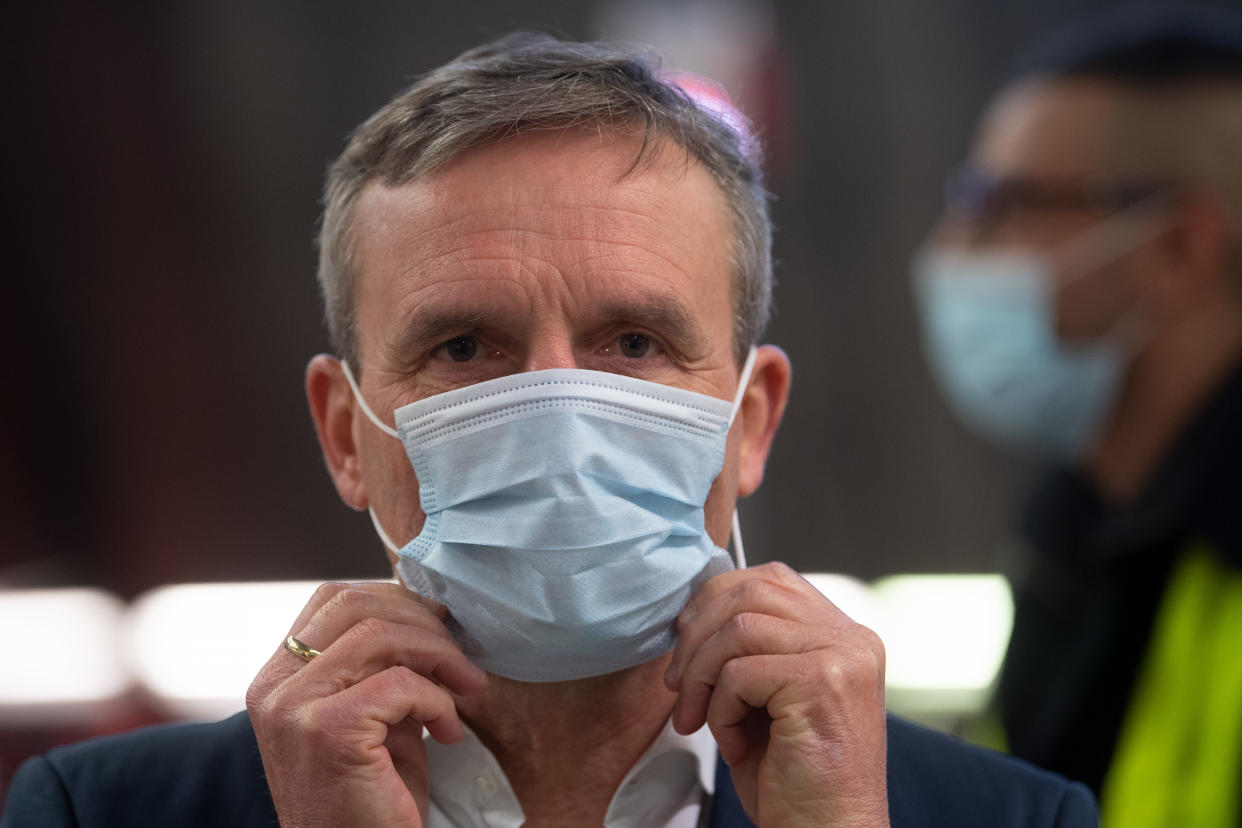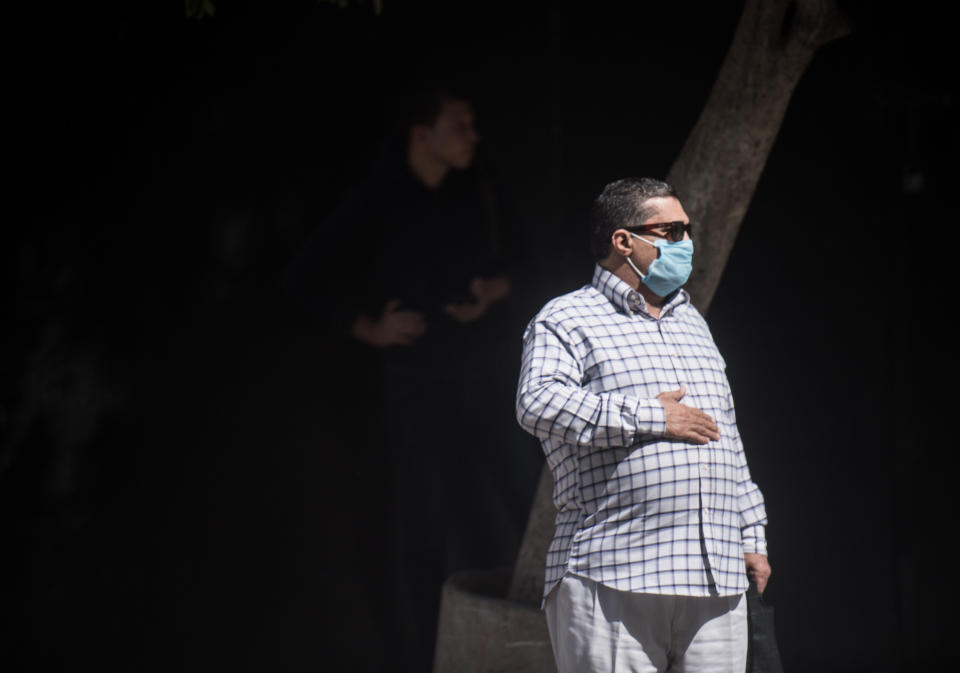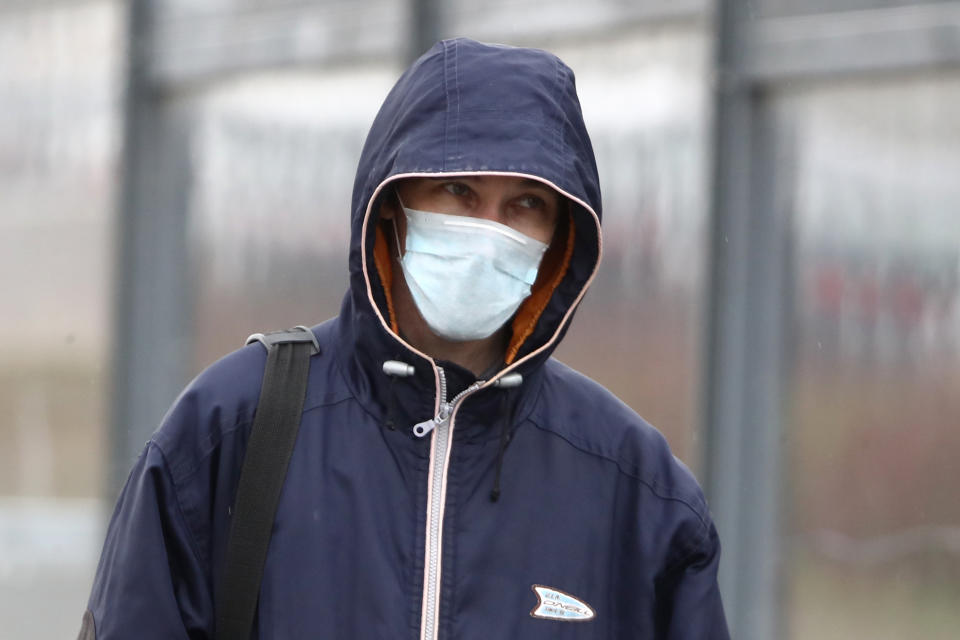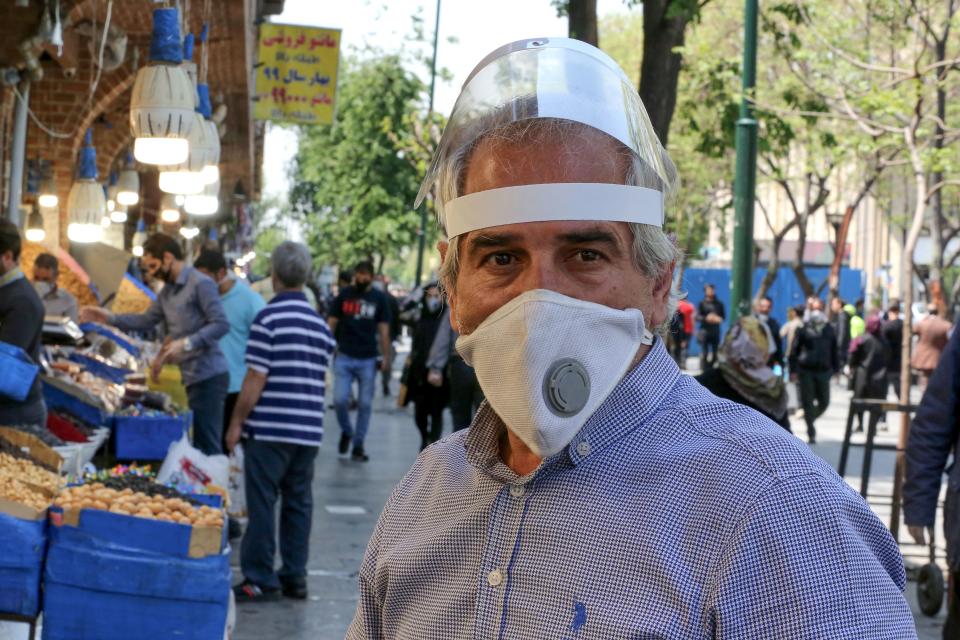Scientists dismiss claim more men are dying from coronavirus because it 'is expressed in testicles’

Scientists have dismissed research that suggests more men could be dying of the coronavirus due to it being expressed in testicles.
Official data shows that from the start of 2020 to the week ending 3 April, more males have died with the infection than females in England and Wales.
This is most pronounced in the 75-84 age group, where 931 men have died with the coronavirus, compared with 515 women.
To learn more, scientists from the Montefiore Medical Center in New York analysed the expression of a coronavirus receptor in human tissue.
They found the testicles were “one of the highest sites of expression”, whereas “very little expression” was detected in ovarian tissue.
However, other experts have called the findings “theoretical” and “far from sufficient”.
Early research suggests the coronavirus is mild in four out of five cases, but it can trigger a respiratory disease called COVID-19.

The New York scientists first evaluated how long it takes men and women to clear the coronavirus.
Nasal and throat swabs were taken from 48 men and 20 women with a confirmed infection.
All the participants were showing symptoms, like a fever or cough.
Latest coronavirus news, updates and advice
Live: Follow all the latest updates from the UK and around the world
Fact-checker: The number of COVID-19 cases in your local area
Explained: Symptoms, latest advice and how it compares to the flu
Results suggest the women cleared the infection on average two days faster than the men.
The scientists also analysed three families made up of both males and females with the coronavirus.
In each family, the female patients cleared the infection first.
To uncover why, the scientists examined body tissue for the expression of the coronavirus receptor angiotensin-converting enzyme 2 (ACE2), which is how the pathogen enters human cells.
Testicles were found to be “one of the highest sites of ACE2 expression” in three databases.
“Interestingly, very little expression of ACE2 was seen in ovarian tissue,” wrote the scientists.
“Taken together, these observations demonstrate for the first time that male subjects have delayed viral clearance of [the coronavirus].”
The scientists wonder if this expression suggests the testicles may act as a “reservoir” for the virus and play a role in “viral persistence”.
Coronavirus: ‘Suggestion testicles act as a reservoir is theoretical’
The research has been published preliminarily on medRxiv, not in a peer-reviewed journal.
Peer-reviewing involves a panel of scientists not involved in the study weighing in on whether it is worth publishing.
Other experts have pointed out shortcomings in the research.
“This is a small study involving a relatively low number of patients,” said Dr Rod Mitchell from the University of Edinburgh.
“The main suggestion that the testicles act as a reservoir for the virus is theoretical and is not actually tested.
“Crucially, the study does not determine when each person became infected and therefore it is not possible to accurately determine the duration of infection.”
The study participants ranged from just three years old to 75.
Dr Mitchell argued the coronavirus infection, and testicles, can vary between children and adults.
“Given the limitations of the study, it is important to emphasise this report has not been peer-reviewed by experts in the field,” he added.
Professor Paolo Madeddu from the University of Bristol also pointed out inflammation of the testicles has not been observed among patients, which would be expected if the gonads expressed the virus receptor.
“There has been no suggestion that reduced testicular function or reduced fertility is an outcome of this virus; a previous report suggesting that men that had contracted the disease had reduced fertility was then retracted,” he said.
“Importantly, another study has shown there was no sign of the virus in the semen of infected men.”
Scientists from Nanjing Medical University, China, analysed the semen of 12 men who recovered from COVID-19 and one who died.
They found no trace of the virus in any of the samples. This paper has also not been peer-reviewed.
“This, together with observation the virus does not travel through the bloodstream, makes the possibility of the testis being a reservoir of the virus unlikely,” said Professor Madeddu.
“A modest increase in the duration of the disease in a small cohort studied by the authors, together with the fact the virus receptor is expressed in testicle, is far from sufficient to say the testicle is a reservoir for the virus.”
Professor Jonathan Ball from the University of Nottingham agreed, adding: “Obviously understanding the body distribution of the virus at different stages of disease is important, and therefore more studies are needed to understand how COVID develops and why males seem to be more badly affected.”

Coronavirus: Why could more men be dying?
When reports emerged suggesting more men were succumbing to the coronavirus in China and Italy, the pandemic’s former epicentres, many pointed the finger at higher rates of smoking.
“Smoking has been considered one of the biggest contributing factors due to the damage to the cilia in the lungs, increasing the risk of any respiratory infection, not merely COVID-19,” Dr James Gill from Warwick Medical School previously said.
Cilia are microscopic hairs that line the airways, clearing any microbes or debris.
“Whilst smoking is a plausible factor, globally, across various different cultures, where smoking rates do differ, we are still seeing the sustained difference in mortality between men and women,” said Dr Gill.
Lifestyle habits aside, women may launch a more robust immune response when exposed to the coronavirus.
“Women may have a more aggressive immune system, meaning a greater resilience to infections,” said Dr Gill.
“The concept of a more aggressive female immune response may also explain why autoimmune diseases, where the body attacks itself, are also more prevalent in women.”
Although why women may have a stronger immune system is not completely understood, it could come down to their DNA.
“The immune response throughout life to vaccines and infections is typically more aggressive and more effective in females compared to males,” Professor Phillip Goulder from the University of Oxford previously said.
“Several factors contribute to this, but these include the fact females have two X chromosomes compared to one in males, and a number of critical immune genes are located on the X chromosome.
“In particular, the protein by which viruses such as coronavirus are sensed is encoded on the X chromosome.
“As a result, this protein is expressed at twice the dose on many immune cells in females compared to males, and the immune response to coronavirus is therefore amplified in females.”
When it comes to a person’s COVID-19 risk, both biological and environmental factors likely come into play.
“Whilst we don’t have a definitive answer on why there is a difference between how men and women respond [to] a COVID-19 infection at the immunological level yet, currently it is a fair assumption there will be a significant interplay between the biology and the environmental facts,” said Dr Gill.

What is the coronavirus?
The coronavirus is one of seven strains of a virus class that are known to infect humans.
Others trigger everything from the common cold to severe acute respiratory syndrome (Sars), which killed 774 people during its 2002/3 outbreak.
Since the coronavirus outbreak was identified, more than 2.4 million cases have been confirmed worldwide, according to Johns Hopkins University.
Of these cases, over 632,900 are known to have “recovered”.
Globally, the death toll has exceeded 165,900.
The coronavirus mainly spreads face-to-face via infected droplets expelled in a cough or sneeze.
There is also evidence it may be transmitted in faeces and survive on surfaces.
Although most cases are mild, pneumonia can come about if the coronavirus spreads to the air sacs in the lungs.
This causes them to become inflamed and filled with fluid or pus.
The lungs then struggle to draw in air, resulting in reduced oxygen in the bloodstream and a build-up of carbon dioxide.
The coronavirus has no “set” treatment, with most patients naturally fighting off the infection.
Those requiring hospitalisation are given “supportive care”, like ventilation, while their immune system gets to work.
Officials urge people to ward off the coronavirus by washing their hands regularly and maintaining social distancing.




